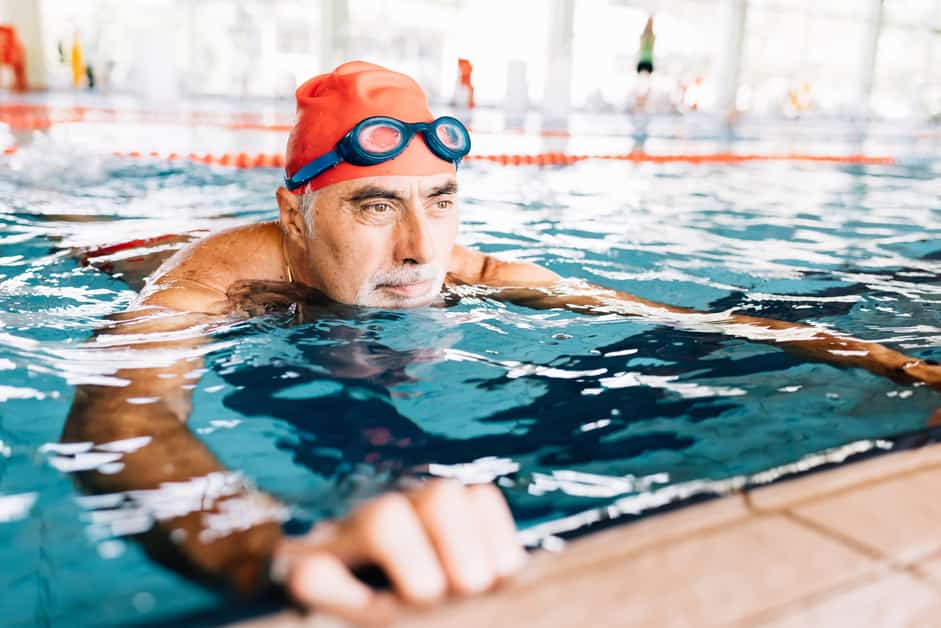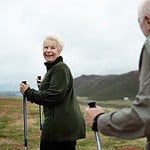Introduction
Dealing with knee pain? Exercise can seem overwhelming. You need to stay fit, strong and flexible but don’t want to make your injury worse. Good news! There are ways to get active without causing more harm. Let’s explore these knee-pain friendly exercises:
What Causes Knee Pain?
Knee pain can have many causes, from injury and postural misalignment to arthritis and age-related degeneration. Usually, it’s because of an imbalance in the muscles around the knee joint, which can be caused by overuse or poor coordination. This can strain the cartilage and irritate tendons and ligaments.
Injuries like ligament tears, broken bones, meniscal tears, and dislocation can also cause knee pain. In older adults with osteoarthritis, the pain comes from excessive wear-and-tear due to connective tissue being broken down over time. This leads to a narrowing of the joint space and tightening of the soft tissue.
Get treatment for your knee pain ASAP, so you can be pain-free as soon as possible!
Benefits of Exercise for Knee Pain
Exercising is great for knee pain management and preventing future injuries. It increases strength, stability, flexibility, and circulation around the joint. Plus, it helps maintain a healthy body weight and boosts your mood and stress levels.
But, not all activities are recommended for those with knee pain. People who have injured their kneecaps or have existing conditions may struggle to stay active.
When selecting an activity, consider these tips:
- Choose low-impact exercises that don’t put too much pressure on the joints.
- Include strength training exercises like lunges or squats.
- Try swimming or biking – they put less strain on the joints than running.
By following these tips, you can stay active and avoid further pain!
Low Impact Exercises
Knee pain? Low-impact exercises are a great way to stay active. These exercises can help strengthen the muscles around the knee, reducing pain. Here are some of the best low-impact exercises for those with knee pain. Try them out!
- Walking
- Swimming
- Cycling
- Yoga
- Pilates
- Tai Chi
Swimming
Swimming is ideal for low-impact exercise for those with knee pain. The buoyancy of the water supports your body weight, decreasing the pressure on your knees. It’s a gentler way to exercise compared to on land and can help reduce stress on your joints.
Swimming has plenty of health benefits. It’s a full-body cardio workout that works all your muscles. Plus, it’s a low-impact way to burn calories and increase your cardiovascular endurance. You’ll also get stronger, more flexible, and gain range of motion in your joints.
Depending on your stroke, swimming can be aerobic or anaerobic. Freestyle strokes target your chest muscles and help increase lung capacity. Backstroke uses your back thighs. Breaststroke and sidestroke are gentler options if you’re new to exercising in water or have balance problems.
Yoga
Yoga is a great, low-impact exercise for people with knee pain from arthritis, injury, or age. The best poses depend on the person and their doctor’s advice. Speak to your healthcare provider before starting a new exercise.
Yoga can reduce pain and stiffness, and improve strength, balance, and range of motion. Good poses include Warrior I, Eagle Pose, and Chair Pose.
- Warrior I: This standing pose strengthens the legs while stretching the chest, shoulders, and legs. Start in a mountain pose, with feet together. Step the left foot back, and bend the right knee. Keep arms outstretched for balance. Lower deeper if desired, and keep hips facing feet. Hold the pose for 5 breaths, then switch sides.
- Eagle Pose: For this balancing pose, start like Warrior I, but twist the thighs inward, so one knee points up and the other down. Lock them together if possible. Lift arms up, entangle hands behind body, like an eagle. Don’t overextend knee by keeping tailbone tucked.
- Chair Pose: This seated asana prepares for squatting. Sit on the floor, tuck toes under the back foot, and lift the hips off the ground. Bring hands overhead in prayer. Keep knees bent and aligned over ankles. Deepen the stretch with arms and breath. To come out, release hands first. Uncurling toes, sit cross-legged. Keep tailbone tucked.
Pilates
Pilates is an exercise that strengthens and tones muscles, while protecting your joints. It strengthens the core abdominal muscles, as well as stretching to improve flexibility and coordination. Pilates is great for knee pain, especially if you’re recovering from injury or have chronic knee pain.
It’s important to do poses correctly and use the right technique. The safest way is to get individualized instruction from a certified instructor. They can customize exercises to your needs, so that your knee joint is not strained too much.
Some helpful Pilates moves for relieving knee pain are:
- Side-lying clam openers
- Half rollbacks with hip lifts
- Single leg crunches
- Spine twists
- Quadruped bird dog stretches
- Resisted leg circles in shallow lunge position
- Seated side-bending stretches
Before you start a new exercise program, talk to your doctor and trainer to make sure it’s safe.
Walking
Walking is good for your health and can take it easy on your joints. Aim to walk for at least thirty minutes, three times a week. The impact depends on how fast you go and the surface. For example, if you walk quickly on concrete, the stress on your joints is greater than if you were jogging on grass.
You may need orthotics for more support, depending on the severity of your knee pain. Orthotics are shoe inserts that reduce foot pronation during exercise and lessen the pressure on your joints. It’s also important to have good form during exercise. Keep your spine ‘neutral’ and evenly distribute your weight on both feet as you walk.
Strengthening Exercises
Knee pain during physical activities? No worries, there are exercises to help. When done right, they can reduce pain and increase stability around the knee joint. Here’s what you need to know about strengthening exercises for knee pain.
Squats
Squats are a great way to strengthen your thigh muscles and glutes. This can help with knee pain and improve overall function. So make sure to follow proper form!
- Start by standing with feet shoulder-width apart and toes pointing forward. Keep your core and spine neutral.
- Bend both knees simultaneously and sit back into a squat, weight balanced through both legs. Your hips should stay above or slightly behind your heels. Chest and shoulders should stay upright. Check a side mirror to ensure correct form.
- Hold the position for two seconds before rising back up. Do two sets of 15 reps, increasing as strength increases.
- Remember, everyone’s body is different. Don’t push into pain. If necessary, consult a physical therapist or orthopedic doctor for advice.
Lunges
Lunges are great for strengthening leg muscles. They support the knee joint and work inner thighs, hamstrings, glutes, and calves. It’s important to use correct technique.
- Start by standing with feet hip-width apart.
- Step forward with one foot. Lower your body to the floor. Keep back straight and head up. Make sure knee is aligned with foot and doesn’t go beyond toes. Get both knees to 90-degree angle.
- Push off from front leg and come back to standing.
For a challenge, hold hand weights in each hand. Or try pulsed lunges (hold for 3 seconds at bottom). Include 10 reps for optimal results in your lower-body strengthening program.
Step-Ups
Step-ups are a great exercise. They target the hamstrings, quadriceps, and glutes. Plus, they help improve balance and strengthen muscles.
To do them, stand in front of a stair or stool. Place your right foot on it and press down with your heel. Lift up until both legs are straight. Then, slowly lower your foot back down. Repeat with your left leg. As you get better, increase the height or hold weights.
Try three sets of ten reps on each side. This will get you the results you want!
Calf Raises
Calf raises are a great way to build knee muscles and reduce pain. Use light weights and do fewer reps. Incorporate stretching and strengthening exercises in your routine.
To do a calf raise, stand on a sturdy surface (step or aerobic platform) for balance. Place the balls of your feet on the edge of the step and lower your heels. You should feel the tension in your calf muscles – pause for one second. Come back up, press down with both feet and squeeze your buttocks together. Keep feet parallel!
Reach the top of the movement, hold for one deep breath. Slowly go back down until you feel the tension in calves. Pause for one or two seconds. Do 8-12 reps. Don’t use too much weight, or it will hurt your knees. Follow up with stretches for proper recovery.
Stretching Exercises
Need to exercise without knee pain? Stretching is the answer! It warms up your muscles, reduces tightness, and increases flexibility around your joints. Plus, it boosts coordination and stability, helping you avoid knee injuries.
Check out this section for stretching exercises tailored to help you work out with minimal knee pain.
Hamstring Stretch
A hamstring stretch can help ease tension in the back of your legs. For this stretch, sit on the edge of a chair/bench with one leg out. Keep your chest up and back straight. Flex your foot towards you, leading with your heel. You’ll feel a slight pull in your leg. Hold for 20-30 seconds. Then switch to the other leg.
Quadriceps Stretch
The Quadriceps Stretch is a great way to ease knee pain and not stress the joints. It targets the muscles in the front of your thighs. To start, warm up for 5-10 minutes with light activity like walking, yoga poses, or arm circles. This boosts blood flow.
To do the Quadriceps Stretch while standing:
- Stand with feet hip-width apart. Hold onto a sturdy object if needed.
- Bend one knee and grab the ankle with one hand. Keep upright posture.
- Gently pull the heel close to the buttock, without feeling pain. Hold for 10-30 seconds. Then switch legs.
- Feel the stretch along the front of the thigh. Take slow breaths when done. Repeat once on each leg if comfortable.
To do the Quadriceps Stretch while seated:
- Sit in an upright chair with feet flat on the floor and wider than hip-width apart. Use extra padding if needed.
- Bring one foot up to rest against inner side of other thigh. Hold by placing hands around outside bottom of same thigh. Keep back straight.
- Gently press down on top thigh to stretch as far as possible. Hold for 10-30 seconds. Do no more than three times per leg. End with deep breaths.
Calf Stretch
The calf is a common area experiencing tightness for people with knee pain. This is because the calf muscles help control the ankle and knee joint’s movement and stability. Stretching the calves can improve flexibility, which is essential for maintaining range of motion and avoiding injury.
The calf stretch can be done standing or seated on a chair/bench. It can be performed with bodyweight only or with extra resistance like a light dumbbell.
For the basic calf stretch:
- Stand on one foot, toes pointing forward and heel on the floor. If this is difficult/uncomfortable, sit in a chair/bench keeping the knee in line with toes.
- Lean into the wall/hold onto a stable surface for balance, keeping feet flat on the ground shoulder-width apart.
- Press down through the heel and feel a stretch in the lower leg.
- Hold for 10-30 seconds before switching legs.
Do this exercise 2-3 times in each session to keep the calves flexible while strength training without injury risk.
Gluteal Stretch
Gluteal stretching is great for increasing hip joint flexibility and allowing legs to move with more ease. Plus, it helps relieve lower back pain due to tightness in the glutes (also known as the buttocks). Before attempting this stretch, warm up your body with light aerobic activity such as walking or slow biking.
To start, stand up straight and cross your right ankle over your left knee. Push your right leg away from you and lean forwards till you feel a stretching sensation in the right leg glutes. Hold this position for around 20 seconds. Do this on both sides three times before transitioning to other exercises such as sitting down or lying down stretches. You can increase the challenge by using a resistance band around your thighs or by working one leg at a time.
For best results, practice this gluteal stretch 3–4 times per week. Either use it as part of a dynamic stretching routine before exercise or as part of your cool down after training sessions.
Tips for Exercising with Knee Pain
Exercising is key for staying healthy, however, it can be tough when you suffer with knee pain. Good news! There are several tricks and advice to assist you with exercising and knee pain. Let’s explore some of the top tips for exercising with knee pain:
Warm Up and Cool Down
Warm up and cool down exercises can help when exercising with knee pain. Warming up increases your body’s internal temperature and blood flow to muscles, so they are better able to handle incoming forces of exercise. Cooling down slowly reduces inflammation and discomfort, and helps you relax.
Start your warm up with light dynamic stretches like arm circles, leg kicks, hip circles, and ankle rolls for 10-15 minutes before more intense activities. As part of the cool down after exercise, do low-intensity stretching for 10-15 minutes. Focus on major muscle groups like calves, hamstrings, and quadriceps, as well as hip muscles. This helps improve flexibility and restore full range of motion movement in areas around the knees. A good stretching routine will ensure proper recovery post exercise.
Wear Proper Footwear
Wear shoes designed for running and physical activity to protect your knees when exercising. Get inserts to make sure they fit properly. Shoes should fit snugly, with room to move your toes. Soles should have good traction so you don’t slip or trip.
Knee pain? Consider this!
Listen to Your Body
Listen to your body when exercising with knee pain. Different activities can impact different areas. Warm up and use proper form. Low-impact activities like walking, cycling, and swimming are good. Focus on strength and stability with squats and lunges. Avoid jumping or running if they cause pain. Track how long you exercise. Do movements within a comfortable range of motion. A physical therapist can guide you with bodyweight exercises. Avoid loading the painful area too much.
Consult with a Physician
Consult with a physician before starting a knee pain-friendly exercise program. This will help identify pre-existing conditions or activities that can cause or worsen knee pain. Discuss which exercises suit your needs and abilities, to get the best results and avoid injury.
Depending on your symptoms, your doctor may refer you to a physical therapist. They are trained in body mechanics and can guide you in designing an at-home exercise program to reduce knee pain, while increasing strength and range of motion. They can also offer ways to modify exercises, based on injury or diagnosis.
Frequently Asked Questions
Q1: What type of exercises can I do to relieve knee pain?
A1: Low-impact exercises like swimming, cycling, and tai chi are great options for those with knee pain. Other exercises that may help include yoga, pilates, and water aerobics.
Q2: What should I do if my knee pain becomes worse while exercising?
A2: If your knee pain becomes worse with exercise, stop and take a break. You should also talk to your doctor to determine if any underlying medical conditions may be contributing to your knee pain.
Q3: What type of shoes should I wear for exercise if I have knee pain?
A3: Choose shoes with a good amount of cushion and support. It’s also important to make sure your shoes fit properly, as ill-fitting shoes can cause knee pain.





